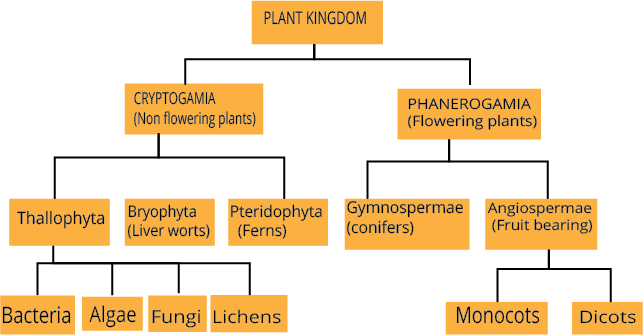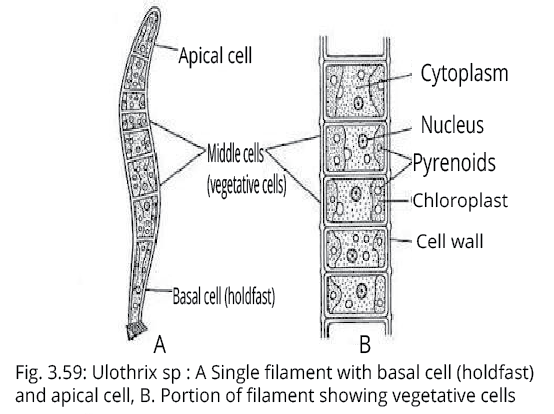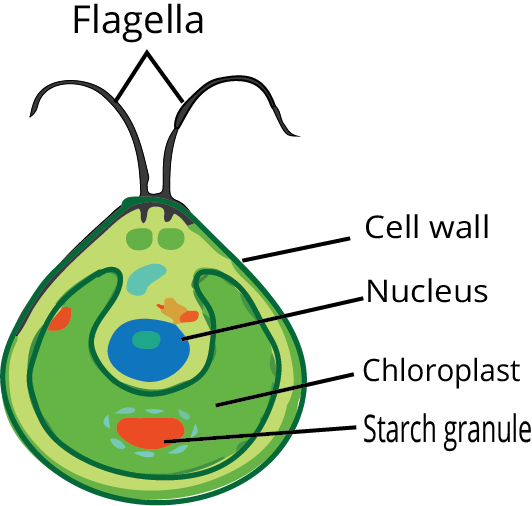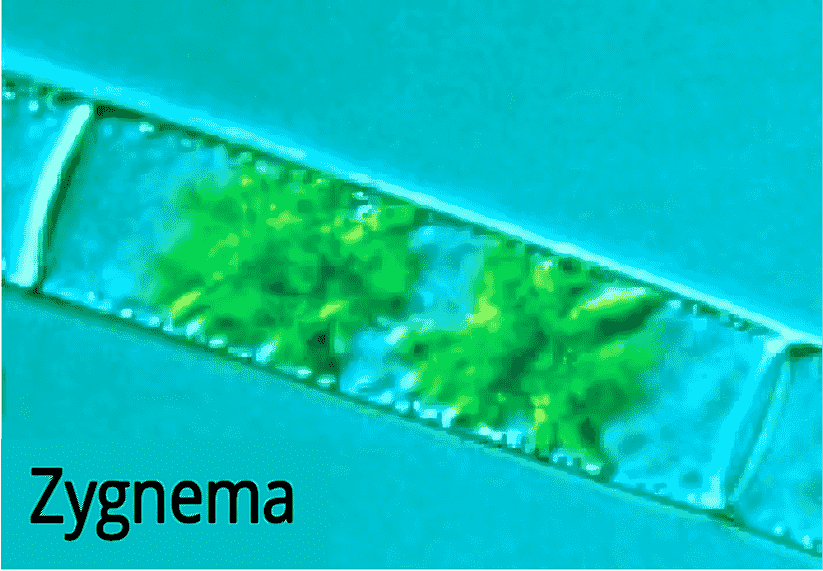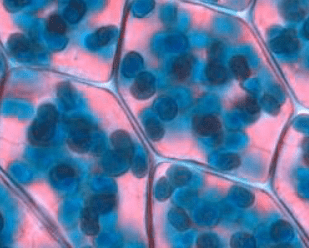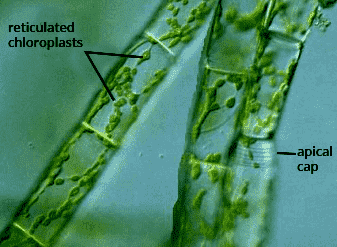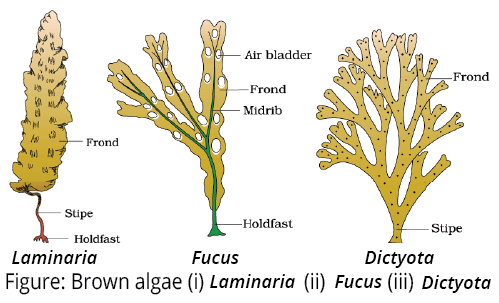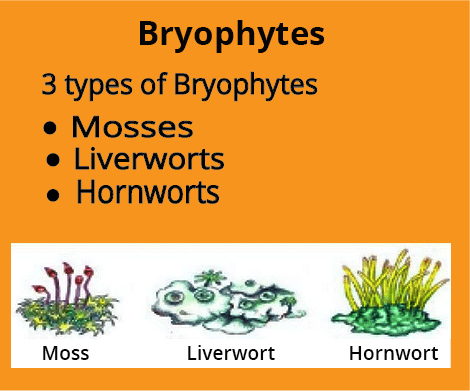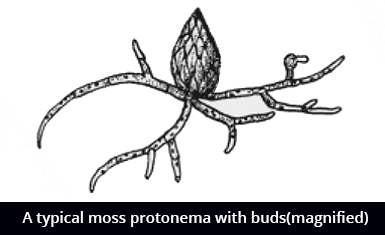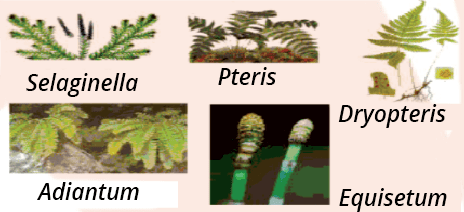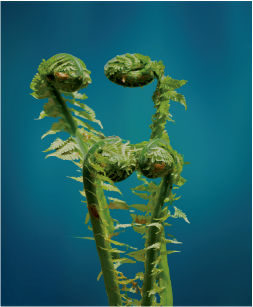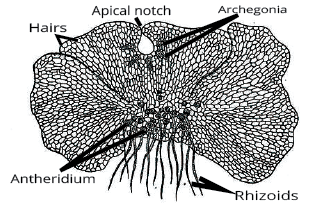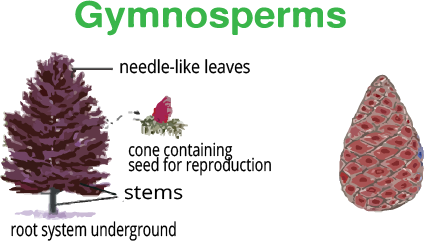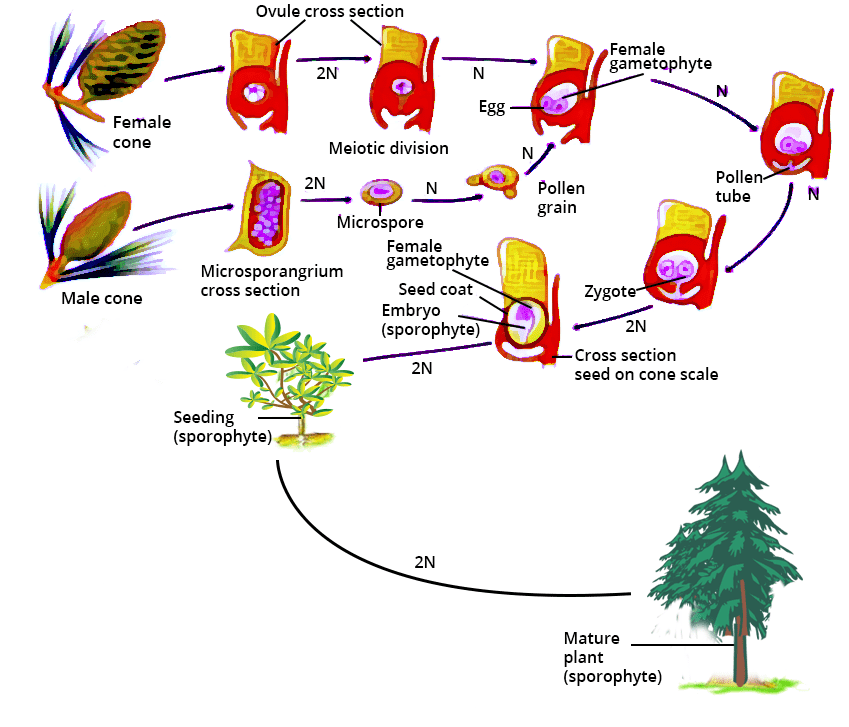Class 11 Biology Chapter 3 Summary Notes PDF Download
FAQs on Plant Kingdom Class 11 Biology Chapter 3 CBSE Notes - 2025-26
1. What is a quick summary of the five major groups in the Plant Kingdom for revision?
The Plant Kingdom, as per the CBSE syllabus, is primarily divided into five major groups. For a quick recap, you should review them in this order:
- Algae: Simple, thalloid, autotrophic, and largely aquatic plants.
- Bryophytes: Small, non-vascular plants in damp environments, known as 'amphibians of the plant kingdom'. Examples include mosses and liverworts.
- Pteridophytes: The first terrestrial plants with vascular tissues (xylem and phloem). Examples include ferns.
- Gymnosperms: Plants that have naked seeds not enclosed within a fruit. Examples include pines and cycads.
- Angiosperms: The most advanced flowering plants, which bear seeds enclosed within a fruit.
2. What are the key features to compare the three classes of Algae: Chlorophyceae, Phaeophyceae, and Rhodophyceae?
For a quick revision, focus on these three distinguishing features:
- Chlorophyceae (Green Algae): Major pigments are Chlorophyll a and b. Food is stored as starch. The cell wall is made of cellulose.
- Phaeophyceae (Brown Algae): Major pigments are Chlorophyll a, c, and fucoxanthin. Food is stored as mannitol and laminarin. The cell wall has cellulose and algin.
- Rhodophyceae (Red Algae): Major pigments are Chlorophyll a, d, and phycoerythrin. Food is stored as floridean starch. They reproduce asexually using non-motile spores.
3. Why are Bryophytes referred to as the 'amphibians of the plant kingdom'?
Bryophytes are called the amphibians of the plant kingdom because they live in soil but depend on water for sexual reproduction. The male gametes (antherozoids) are flagellated and need a thin film of water to swim to the female gamete (egg) for fertilization. This dual dependency on both land and water is similar to amphibians in the animal kingdom.
4. What significant evolutionary advance do Pteridophytes show over Bryophytes?
The most significant evolutionary advance Pteridophytes have over Bryophytes is the presence of a well-differentiated plant body with vascular tissues (xylem and phloem). This allowed them to grow taller and survive in a wider range of terrestrial habitats. Unlike Bryophytes, the dominant phase in the Pteridophyte life cycle is the diploid sporophyte, which is the main plant body.
5. How does heterospory in Pteridophytes lead to the seed habit seen in higher plants?
Heterospory, the production of two different kinds of spores (microspores and megaspores) as seen in Selaginella and Salvinia, is a crucial step towards the seed habit. The megaspore is retained on the parent sporophyte, where it germinates into the female gametophyte. Fertilization and the development of the young embryo also occur here. This retention and in-situ development of the embryo is a direct precursor to the evolution of the seed.
6. What are the core differences to remember between Gymnosperms and Angiosperms?
The primary difference lies in how they bear seeds:
- Gymnosperms have naked seeds, meaning the ovules are not enclosed by any ovary wall and remain exposed both before and after fertilization. They do not produce flowers or fruits.
- Angiosperms are flowering plants where the ovules are enclosed within a specialised structure called the ovary. After fertilization, the ovary develops into a fruit, and the ovules become seeds enclosed within it.
7. What is the fundamental difference between the endosperm of Gymnosperms and Angiosperms?
The key difference is in their formation and ploidy:
- In Gymnosperms, the endosperm is a haploid (n) tissue that develops from the female gametophyte before fertilization. It serves as the nutritive tissue for the embryo.
- In Angiosperms, the endosperm is a triploid (3n) tissue formed after fertilization as a result of the fusion of a male gamete with the central cell (double fertilization).
8. How does the concept of 'alternation of generations' change across the plant groups?
Alternation of generations describes the life cycle alternating between a haploid gametophyte and a diploid sporophyte. The key trend to remember for revision is the shift in dominance:
- In Algae and Bryophytes, the gametophyte is the dominant, photosynthetic, and independent phase. The sporophyte is dependent on it.
- In Pteridophytes, the sporophyte becomes the dominant, independent phase, though the gametophyte (prothallus) is also free-living.
- In Gymnosperms and Angiosperms, the sporophyte is completely dominant. The gametophyte is highly reduced and dependent on the sporophyte.
9. What are the key reproductive structures to identify in each major plant group?
For quick identification during revision, remember these key structures:
- Algae: Can have simple structures like zoospores, or specialized sex organs in complex forms like the globule (male) and nucule (female) in Chara.
- Bryophytes: Multicellular, jacketed sex organs called antheridium (male) and archegonium (female).
- Pteridophytes: Also have antheridia and archegonia, borne on a small gametophyte called the prothallus. Spores are produced in sporangia, often clustered into strobili or cones.
- Gymnosperms: Produce distinct male and female cones (strobili) that bear microspores and megaspores.
- Angiosperms: The flower is the main reproductive structure, containing stamens (male part) and pistil/carpel (female part).
10. What are some of the main economic uses of Algae that are important to recall?
Algae have significant economic importance. Key points to remember are:
- Carbon Fixation: They perform about half of the total CO₂ fixation on Earth.
- Food Source: Species like Porphyra, Laminaria, and Sargassum are consumed as food. Chlorella and Spirulina are protein-rich food supplements.
- Hydrocolloids: Algin (from brown algae) and carrageenan (from red algae) are used as commercial water-holding substances.
- Agar: Obtained from Gelidium and Gracilaria, it is used to grow microbes and in preparations of jellies and ice creams.

























